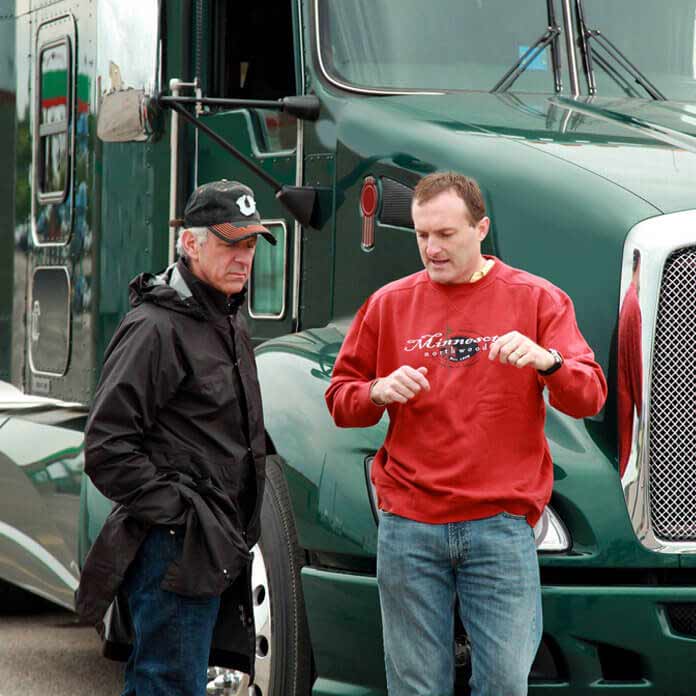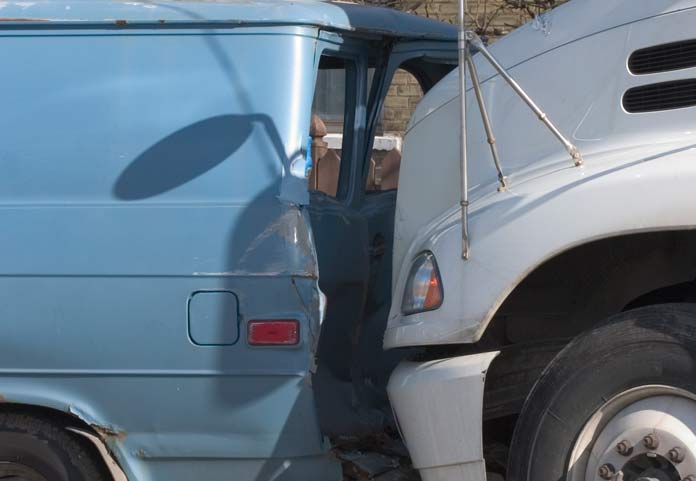A large commercial Kenworth truck plowed into the rear end of a Ford F-150 pickup truck this fall inside a Minnesota highway work zone, killing a road crew worker and alarming safety officials. Minnesota State Patrol Lt. Tiffani Nielson pleaded at a news conference for semi-truck drivers and other motorists to slow down in work zones and give highway crews time and space to do their jobs. “You’re driving through their office,’’ Trooper Nielson said.
The commercial truck crash near Rogers, Minn., killed Vernon C. Hedquist, 59, of Pillager, Minn., and stirred awareness of a prevalent danger involving out-of-control truck traffic in areas under road construction. The October collision took the life of Mr. Hedquist and hospitalized his co-worker, Thomas J. Wood of Maple Grove. The crash pushed Minnesota further into a year of excessive work zone accidents.
In the first 10 months of 2018, drivers caused 10 Minnesota work zone fatal crashes resulting in 13 deaths. That’s the most since 2007 when 17 people died over the course of a full year, according to the State Patrol.
Experienced Truck Accident Lawyers
Truck accident lawyer Fred Pritzker said drivers of passenger cars, SUVs, pickups and motorcycles become victimized along with construction workers when semi-truck drivers abandon safety precautions in roadway work zones. “Almost 30 percent of work zone crashes involve large trucks and every one of them is preventable,’’ said Pritzker, whose personal injury law firm has recovered tens of millions of dollars for truck crash victims and their families.

Attorney Eric Hageman heads semi-truck crash litigation for Pritzker Hageman Law Firm. He studies freight industry time pressures, 18-wheeler equipment shortcomings and safety shortcuts taken by individual truckers and by the trucking industry itself. Mr. Hageman conducts comprehensive crash investigations, cross-checking whether drivers of large trucks were properly trained, rested and driving by the book. When his probes find negligence, he holds truck drivers, trucking companies, insurance companies and freight owners accountable.
“Work zone crashes involve semi-trucks far too often,’’ Hageman said. “Each operator must recognize there’s no margin for error as they approach a work zone.’’ Hageman said unsafe speed, fatigue, distracted driving, driving too closely, faulty brakes, worn-out tires and overweight loads all factor into the investigations he conducts. He laces years of courtroom experience with intensive preparation to win your semi-truck work zone crash lawsuit.
You are not alone
Federal highway officials noticed increases in the number of people killed in work zone crashes involving large trucks. More than 1,000 deaths and more than 18,000 injuries occurred during the past five years, according to the Federal Highway Administration (FHWA).
Additional Safety research tells us that the most common types of work zone crashes involving large trucks include rear-end pileups, angle crashes and head-on collisions. Moreover, 65 percent of fatal work zone crashes involving large trucks occur during the day. FHWA reported six times as many fatal work zone crashes involving large trucks happen on weekdays compared to weekends.
Even outside of work zones, large truck accident trends put families and individuals at greater risk. The most recent 2018 crash facts report by the National Center for Statistics and Analysis said that in 2017, when overall highway deaths decreased, crashes involving large trucks increased 9 percent.
Research by the U.S. Department of Transportation reported that rear-end collisions made up 41% of work zone crashes, in cases similar to Minnesota’s recent semi-truck work zone death.
According to the State Patrol, a Kenworth commercial truck slammed into the rear of a pickup truck with a trailer near a construction lane in the far northwestern suburbs of Minneapolis-St. Paul. The pickup slowed down for traffic on Interstate 94 and spun into the work zone, striking two stationary vehicles and the two construction workers. Lt. Nielson said State Patrol investigators collected preliminary facts suggesting that the 47-year-old commercial truck driver could be charged with one or more crimes for failing to slow down and control his heavy truck.
Work Zone Semi Crashes
This year in Pennsylvania, lawmakers considered a bill to allow cameras in active work zones on interstate highways and the turnpike to catch speeders. Work zone crashes in Pennsylvania increased 25 percent between 2012 and 2016. Those collisions exceeded 2,000 in 2016, then receded last year to 1,789, said the Pennsylvania Department of Transportation.
In Missouri, work zone crashes killed 16 people in 2017. Moreover, 19 Missouri Transportation Department employees died in work zone crashes since 2000.
Over the past two years in Ohio, state transportation road crew members died on the state’s highways an average of 150 times. A prime example happened this year when a semi-truck barreled into a construction zone along Interstate 71 south of Columbus. Two road crew members sitting in the truck took the brunt of the crash and were lucky to survive.
A more recent example occurred this fall in Rosalia, Washington. Three passenger vehicles stopped for a flagger in a construction zone on U.S. Highway 195. A semitrailer driven by 55-year-old Robert Cathcart of Spokane crashed into one of the stopped vehicles. The impact set off a chain reaction with the three cars, causing one of them to go up in flames. The Washington State Patrol said in a news release that two victims in the semi-truck work zone crash became hospitalized. The Patrol also said Cathcart was charged with negligent driving of his semi-truck in the work zone.
Holding truckers responsible
Work zone dangers include narrow lanes, acute angles for merging, shifting lanes, stop-and-go traffic, unexpected work vehicles entering the traffic flow, temporary speed limit adjustments, flaggers in the roadway, confused drivers, and other disruptions.
Good semi-truck crash lawyers prosecute their cases by holding truck drivers and their employers accountable to the highest industry safety practices. The attorneys know the stopping distances required for large trucks at given weights, speeds, road grades and road conditions. Even on dry, level highways, an 80,000-pound tractor trailer traveling at 55 mph needs almost 50 percent more stopping distance than a car.
Then too, did the truck driver move to the correct lane well in advance of the lane closure? Did the driver take advantage of the truck’s height advantage to anticipate braking situations? Was the driver aware of “no-zone’’ danger areas around the truck where crashes are more likely to occur? Were the truck’s rear-view mirrors properly positioned? Was the driver distracted by a cell phone? Was the truck driver sleepy or fatigued by driving too many hours?
At Pritzker Hageman Law Firm, each trucking case brings new opportunities for attorneys to protect the rights of individual accident survivors and their families.
